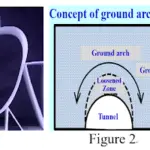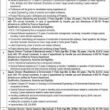The valuing of variations in any project are lifeblood of a project provided they are properly settled in terms of fair and properly evaluated Star Rates. So actually you want to know “what are star rates”.
In unit price contract the Bill of Quantities (BQ or BOQ) is provided by the employer through his consultants but the quantities quoted in there are only estimated and not final.
The difference between estimated quantities and executed quantities depends on the complexity of the structure as well as the fair judgment and experience of the party preparing the BOQ. The contractor, in the bidding phase, quote unit rate or unit price against each item of work involved thereby building up the total contract price.
During the execution of works the actual quantities are jointly measured and verified by the Engineer for interim payment purpose.
During the final measurement stages any variation from the original works or any additional works the rate of which are not agreed in the initial BOQ unit price contract would be submitted as Variation Order or Rate analysis for the approval of the Engineering & the Client.
These new rates quoted by the Contractor other than the rates quoted in Contract are termed as Star Rates. These star rates are mostly used in agreements with sub-contractors and are seldom in case of entire construction project.

What are Star Rates?
As per above discussion we are now able to define “what are star rates” –
Star Rates are the rates jointly agreed by the Engineer and Contractor for valuing of any instructed variations from the contract quantities quoted in the BOQ during bidding stages of the Contract.
Also Read: Importance of Building contractors
What is Re-Measurement Contract?
These types of Contracts are also sometimes referred as Re-measurement Contracts. In this types of Contract typical drawings are generally used during bidding stages. The scope and quantities for the works involved in Re-measurement contracts are easily adjustable thus disputes are reduced. But sometimes the large changes in quantities, sometimes, require deep negotiations to resolve.
Arguably , this type of contract is fair with the employer at risk for total quantities and the Contractor at risk for fixed unit price. Disputes situations are reduced because the final contact sum is based on a final re-measurement rather than being based on preliminary quantities set at tender but large quantity changes (>15-25%) can lead to increase or decrease in unit prices which can cause some intense negiotiations to settle.
For these types of projects where star rates are involved; the works involved are to breakdown completely which require excellent quantity surveying and reporting capabilities of the staff involved. The Estimation Engineer or Quantity Surveyor must have bulk experience for preparation of BOQs and verification of Quantity Witness Reports (QWRs) and IPCs.
One example of the star rate can be; like there is a work for installation of some mechanized part in a building at some elevation or level but as the project is carried out, the level or elevation is increased thereby making the installation difficult and dangerous. In such situation the contractor can prepare a Star Rate for such work keeping in view the original unit price in original contract.
Also Read: Qualities For A Good Estimation Engineer Quantity Surveyor
Requirements for Star Rate
Any of the Star rates submitted by the Contractor in Re- Measurement Contract are considered acceptable if the rates are:
- A built up rate which can be assessed by raw materials cost, labour cost and preliminaries plus reasonable overheads and profits, but no major special material involved [special material cost less than or equal to 30% of lumpsum price.]
- Equal to or close to the term rate of similar nature or unit rate employed by the government authorities -Housing Authority etc. BUT NO MORE THAN 15% difference.
- Equal to or close to 15% rate previously employed in other lumpsum contract competitive with the quotations from alternative contractors.
If the star rates cannot be assesed/approved by the above methods, a negotiation can be made and the final unit rate approved by the director in the writing. Otherwise , star rates items must be taken out for tendering.

Guideline for Star Rates in FIDIC
The above assessment method should be released to all term contractors for information.
The FIDIC – based contracts, which is mostly the case, the valuing of variations is properly documented. The Clause 51.1 of FIDIC gives six situations where the contractor is authorized to recover the surplus costs that are arising by the instructed variations, provided that the variation has not resulted from the Contractor default.
The FIDIC clause 52.1 guides the Engineer how to value variations – the top priority is given to the rates that are given in the contract. In the event of disagreement, the Engineer can fix the rates that are appropriate, in his opinion, by notifying the contractor accordingly, with a copy to the employer.












